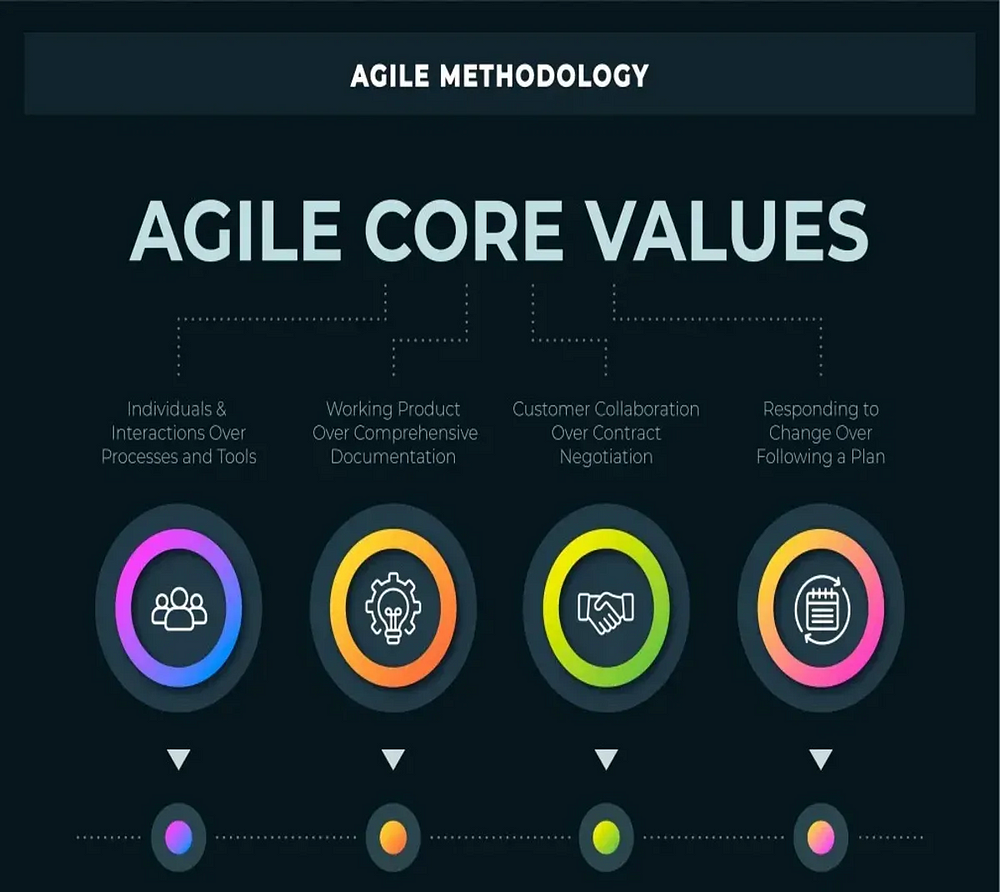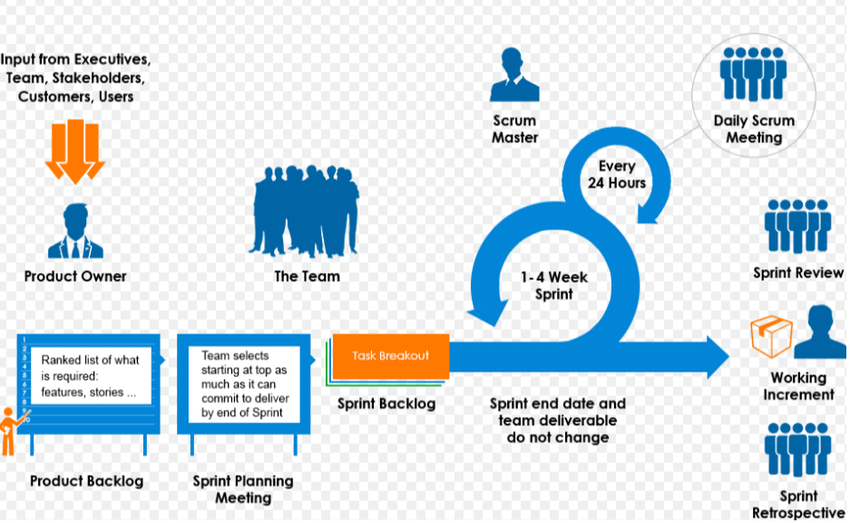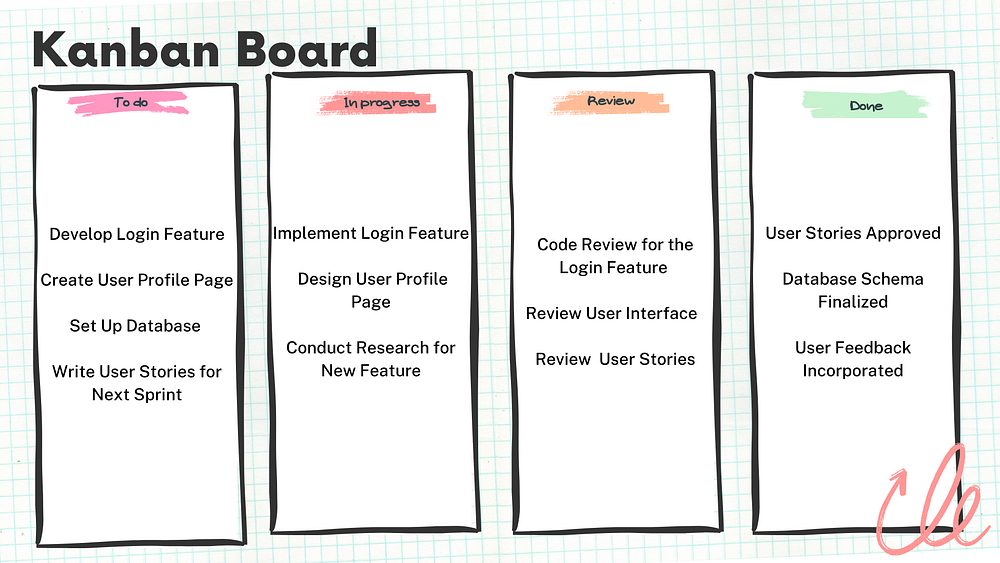Agile Development: Core Values, Principles, and Success Stories
 Abdulrozaq
Abdulrozaq
In today’s fast-paced world of software development, traditional methods often struggle to keep up with the rapid changes and demands. Companies need a flexible, efficient, and collaborative approach to delivering value to customers—and this is where Agile development comes into play.
In this article, we'll delve into the fundamentals of Agile, exploring its core values, principles, and methodologies, alongside real-world examples of successful Agile implementations. Whether you're new to Agile or looking to refine your approach, this guide will provide insights and practical tips to help your team thrive in an ever-changing environment.
What is Agile?
Agile is more than just a methodology—it's a mindset designed to embrace adaptability, continuous improvement, and customer-centricity. Agile was created to address the limitations of traditional development models by encouraging flexibility and rapid iterations.
At its core, Agile is both iterative and incremental. Iterative means repeating cycles of development, testing, and feedback, while incremental refers to gradually building and improving upon a product by adding new features over time. These features are developed in smaller, manageable parts called sprints—typically 2 to 4 weeks in duration.
Agile teams work on these sprints in short cycles, where all stages of software development, from planning to testing, are repeated and refined based on feedback. This ensures faster delivery of valuable features, better responsiveness to changing requirements, and a continual focus on delivering customer needs.
Agile Concepts Using a Road Trip Analogy

Agile Road Trip Adventure
Imagine you and your friends are going on a road trip. Each person has a role: one is the driver, another is in charge of navigation, and someone else brings snacks and playlists. You all work together, making decisions along the way — like where to stop for gas or which scenic route to take. This is like an Agile team where everyone collaborates, shares responsibility, and contributes to reaching the final destination smoothly.
Iterations and Sprints (Pit Stops and Checkpoints)
Instead of driving straight for 10 hours without stopping, you plan checkpoints or pit stops. After every few hours of driving, you stop to stretch, refuel, and reassess your route. Maybe someone suggests taking a detour to see a cool landmark. Each stop is like an “iteration” or “sprint” in Agile, where you review progress and adjust your plan if needed.
Customer Feedback (Passenger Preferences)
During the trip, you ask your friends for feedback. If someone prefers quieter music or wants to stop for coffee, you adjust your plan to keep everyone happy. In Agile, this is like gathering customer feedback throughout the project. You show them your progress and make changes based on their preferences, ensuring everyone enjoys the journey.
Prioritizing Features (What’s Most Important)
When you plan the road trip, you make a list of things you want to do: visit national parks, eat at famous diners, and take scenic routes. But you can’t do everything at once, so you decide which stops are the most important to hit first. This is like prioritizing features in Agile — you focus on the most important tasks first, ensuring key elements of the project are delivered early.
Continuous Improvement (Better Trips Every Time)
At the end of the trip, you all reflect on what went well and what could’ve been better. Maybe you should have packed more snacks, or maybe next time you’ll take a different route. This reflection helps you plan better trips in the future. In Agile, this process is called continuous improvement, where teams look back at each sprint and find ways to work more efficiently and effectively in the next one.
Agile Core Values

The Manifesto for Agile Software Development identifies four basic values, which represent the core philosophy of Agile Development:
Value responding to change over following a plan
Value individuals and interactions over processes and tools
Value working software over comprehensive documentation
Value customer collaboration over contract negotiation
Value responding to change over following a plan
Agile recognizes the unpredictable nature of software projects. The Agile Manifesto includes ideas that allow it to be responsive to changes, handling them with increased flexibility and trusting the project team to develop solutions to project problems. Agile understands that depending too heavily on a plan and predefined processes exacerbates problems when unpredictable requirements arise. All team members involved in the software development life cycle need to accept these priorities for a project to be truly agile.
Value customer collaboration over contract negotiation
Another important aspect of Agile development is that customers must continually be involved with the project team. They don’t just sit down with the project team for a few sessions to develop the specifications and then go on and wait for the product. They become part of the technical team. Because working software is being developed throughout the project, customers are continually involved in defining requirements and testing components. Agile ensures the product meets customer satisfaction, which is a key indicator of product success.
Value working software over comprehensive documentation
The primary goal of a software development project is to create high-quality software. Agile methodology emphasizes that having functional software is more important than extensive documentation about how it works. A typical example could be developing an action-adventure video game. The core gameplay mechanics, such as character movement, jumping, and combat, are crucial. Instead of focusing on detailed specifications, flowcharts, and tutorials on controls before the core mechanics are even implemented, Agile encourages the team to prioritize creating a working prototype.
The team would start by implementing key features like character movement and combat, building them incrementally. Each sprint results in a playable version of the game, allowing real-time testing of the mechanics. Feedback from testers helps fine-tune the controls and combat dynamics, based on actual user experience rather than predictions from design documents. While documentation is kept minimal, its purpose is to support the development process, ensuring the focus remains on delivering an engaging gaming experience rather than crafting perfect instruction manuals.
Value individuals and interactions over processes and tools
Another approach in Agile development is that software projects should be more collaborative efforts. That is working together and communicating well is more important than using fancy tools or following strict rules. Good communication between the Developer, QA, customer, and Product Manager collectively working toward one goal. Agile places a strong emphasis on people communicating with one another, working as a team, and cooperating well. Agile believes that, while tools and processes are necessary, what truly makes a project successful is when employees can effectively collaborate and offer value to the customer.
Agile Principles
Building on these core values, Agile defines a set of 12 principles that guide its implementation:
Customer Satisfaction Through Early and Continuous Software Delivery: Agile aims to deliver value to customers as early and frequently as possible.
Welcome Changing Requirements, Even Late in Development: Agile embraces change and encourages teams to be flexible in adapting to evolving requirements.
Deliver Working Software/Product Frequently: Agile emphasizes delivering functional software or a product in short, regular intervals to get immediate feedback.
Collaboration Between Business and Developers: Close collaboration between stakeholders and development teams is crucial to Agile’s success.
Build Projects Around Motivated Individuals: Motivated team members are central to Agile’s effectiveness, and they are trusted to make decisions.
Use Face-to-Face Communication When Possible: Agile prefers face-to-face communication for its effectiveness in conveying information.
Working Software/Product is the Primary Measure of Progress: Tangible, working software or a working product is the best indicator of project progress.
Maintain a Sustainable Pace of Work: Agile teams work at a sustainable pace to prevent burnout.
Technical Excellence and Good Design: High-quality technical work and design are essential for sustainable product development.
Simplicity: Agile aims for simplicity, avoiding unnecessary complexity.
Self-Organizing Teams: Agile teams are self-organizing, with the autonomy to make decisions about their work.
Regular Reflection and Adaptation: Teams engage in regular self-assessment and adaptation to continuously improve.
Real-World Examples and Case Studies
Spotify
Spotify, the popular music streaming service, is a prime example of successful Agile implementation. They adopted a unique Agile framework known as the “Spotify Model,” which emphasizes autonomous squads, tribes, chapters, and guilds. Each squad operates like a mini-startup, responsible for a specific aspect of the product. This approach has allowed Spotify to innovate rapidly, scale efficiently, and maintain a high level of employee engagement and satisfaction.
ING Bank
ING Bank, a global financial institution, transformed its operations by adopting Agile methodologies. They shifted from a traditional hierarchical structure to an Agile organization, focusing on cross-functional teams and iterative development. This transformation enabled ING to reduce time-to-market for new products, improve customer satisfaction, and enhance operational efficiency. The bank’s Agile journey is often cited as a benchmark for Agile transformation in the financial sector.
Microsoft
Microsoft’s transition to Agile practices, particularly within its Developer Division, has been instrumental in the success of products like Visual Studio and Azure DevOps. By embracing Agile, Microsoft has been able to deliver continuous updates, respond quickly to customer feedback, and foster a culture of collaboration and innovation. This shift has significantly improved the quality and reliability of their software products.
Airbnb
Airbnb, the online marketplace for lodging and tourism experiences, leverages Agile methodologies to stay ahead in the competitive tech industry. Agile practices have enabled Airbnb to rapidly iterate on features, enhance user experience, and scale their platform to accommodate millions of users worldwide. The company’s focus on customer feedback and continuous improvement has been key to its growth and success.
Types of Agile Methodologies
Scrum

Scrum is a framework used to implement Agile principles, primarily focused on team collaboration and iterative progress.
Key Concepts:
Sprints: Fixed periods (usually 1–4 weeks) where specific work items are completed.
Roles: Scrum defines three key roles:
Product Owner: Defines the product backlog and prioritizes features.
Scrum Master: Facilitates the process, ensures Scrum is followed, and removes roadblocks.
Development Team: Executes the work during the sprint.
Meetings: Scrum includes regular ceremonies, such as:
Daily Stand-up: A brief daily meeting where team members update progress and any blockers.
Sprint Planning: Planning the tasks for the upcoming sprint.
Sprint Review: A demo of completed work.
Sprint Retrospective: A meeting to reflect on the sprint and identify improvements.
Scrum emphasizes transparency, adaptation, and continuous delivery through iterative cycles, with regular opportunities to inspect and adjust.
Kanban

Kanban is a visual system for managing work as it moves through a process. It focuses on improving efficiency by visualizing tasks, limiting work in progress (WIP), and optimizing flow.
Key Concepts:
Kanban Board: A visual tool that shows the status of tasks, often with columns like To Do, In Progress, and Done.
Work In Progress (WIP) Limits: The maximum number of tasks that can be in progress at any one time. This helps to prevent overloading the team and ensures focus on completing tasks.
Continuous Flow: Unlike Scrum’s time-boxed sprints, Kanban allows for work to be continuously pulled from the backlog as capacity allows.
Pull System: Team members “pull” tasks when they are ready to work on them, instead of being assigned tasks at the start.
Kanban is flexible and promotes a constant workflow, ideal for teams with evolving priorities or varying workloads.
Lean
Lean focuses on optimizing efficiency by eliminating waste and maximizing value for the customer. It originated from manufacturing but is widely used in software development to streamline processes.
Key Principles:
Eliminate Waste: Remove anything that doesn’t add value, such as unnecessary features, rework, or delays.
Deliver Value Continuously: Focus on delivering value to the customer as frequently as possible.
Optimize Flow: Ensure that work flows smoothly through the development process without bottlenecks or delays.
Respect for People: Empower the team by fostering collaboration and continuous improvement.
Lean emphasizes continuous improvement (Kaizen) and encourages organizations to think holistically about how they can deliver value efficiently with minimal overhead.
Shift Left
Shift Left refers to moving tasks (especially testing) earlier in the software development lifecycle (SDLC). The goal is to find and address defects or issues sooner, thus improving quality and reducing costs.
Key Concepts:
Early Testing: Testing is done as early as possible, starting during the requirements and design phases.
Continuous Integration (CI): Developers frequently integrate code into a shared repository, allowing for early detection of issues.
Collaboration: Encourages developers, testers, and stakeholders to collaborate early and often.
Automation: Automated testing is often emphasized to ensure rapid feedback and efficiency.
Shift Left ensures issues are caught early, reducing the risk of expensive late-stage fixes and improving overall quality.
Shift Right
Shift Right focuses on testing and monitoring in the production environment. While Shift Left emphasizes prevention, Shift Right is about detecting issues in real-world use.
Key Concepts:
Production Monitoring: Continuous observation of the software in production to detect issues, performance bottlenecks, and user behavior.
Canary Releases: A small subset of users is exposed to new features or code changes to see how it behaves in production before a full release.
A/B Testing: Different versions of a feature are released to different user groups to assess which performs better.
User Feedback: Gathering feedback from real users to ensure the system performs well in the live environment.
Shift Right emphasizes the importance of monitoring and learning from real-world usage, ensuring that the software continues to meet user needs after release.
Benefits of Agile Methodology
Adaptability: Agile’s flexibility allows teams to adjust to evolving requirements and priorities, minimizing the chances of wasted work.
Customer Focus: Ongoing collaboration with customers ensures the product meets real needs and expectations.
Quicker Delivery: Agile’s iterative process enables the rapid release of working software or features, allowing for faster time-to-market.
Enhanced Quality: Agile practices like Test-Driven Development (TDD) and continuous integration boost code quality and reduce the occurrence of defects.
Boosted Team Morale: Agile prioritizes motivated individuals and self-organizing teams, leading to higher morale and engagement.
Improved Risk Management: Regular iterations and feedback from customers help identify and address risks early.
In conclusion, Agile methodology has revolutionized project management and software development by offering adaptable frameworks that prioritize flexibility, customer focus, and continuous improvement. By adopting Agile, organizations can deliver faster, higher-quality products that align with customer needs, positioning them for success in today's fast-paced business environment.
Subscribe to my newsletter
Read articles from Abdulrozaq directly inside your inbox. Subscribe to the newsletter, and don't miss out.
Written by

Abdulrozaq
Abdulrozaq
Open source enthusiast